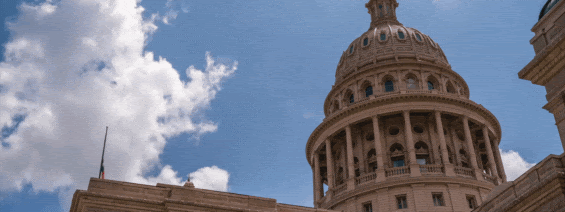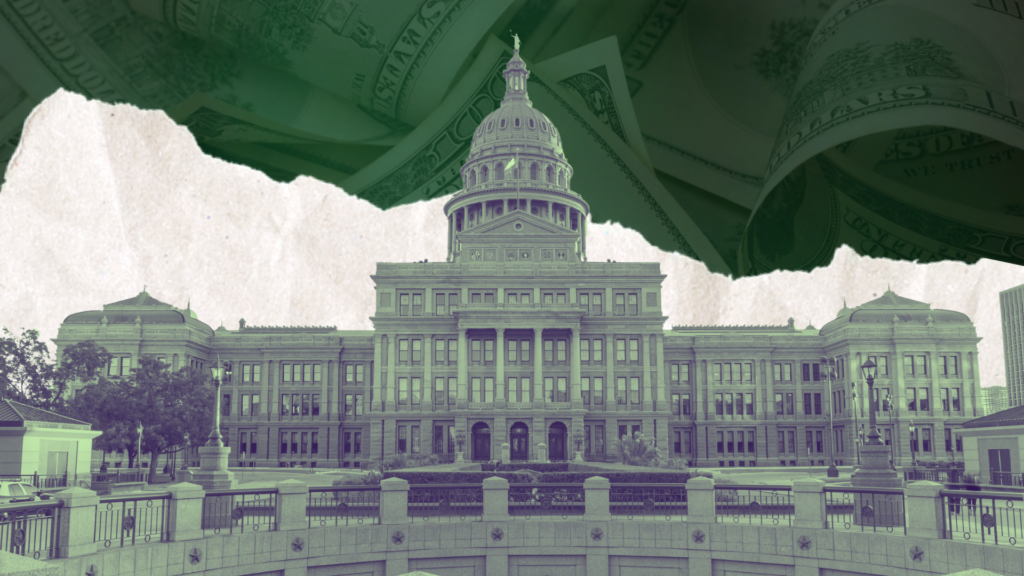Will Texas have a budget surplus next year?
This is a preview of our Texas 2036 newsletter taking a look at the state’s budget planning process and the possibility of a budget surplus. To receive this weekly look at our work, sign up here.
What’s the state of the Texas budget?

As tax day approaches on Monday, households and businesses around the country are taking inventory of where they stand.
For the state of Texas, checking and planning its finances is a continuous process that culminates in the passage of the biennial state budget, generally during the regular legislative session.
Budget 101
The state budget writing process is a two-year cycle that effectively starts in the September following a regular legislative session, when the newly Legislatively-approved and Comptroller-certified two-year budget takes effect.
- The process begins with agencies developing and submitting strategic plans and requests for the next budget, followed by budget hearings and recommendations. This planning process is happening right now with hearings expected to begin late summer.
- The Legislature then reviews these requests during its regular session, which starts in January of odd-numbered years, leading to the passage of the budget bill.
- Once passed, the budget is sent to the Comptroller for certification and then to the Governor for signature.
- Throughout the fiscal biennium, legislative agencies and the Office of the Governor receive and review reports on agencies’ implementation of the budget.
How big is the state budget?
The most recent two-year Texas budget was $318.4 billion driven by both state and federal funds, with health and human services and education accounting for more than 70% of the budget.
How does Texas’ budget compare to California?
 California’s state budget is significantly bigger than Texas — $922 billion in all funds for the 2023 and 2024 fiscal years — partially due to the fact that it serves a population that is 30% larger than Texas.
California’s state budget is significantly bigger than Texas — $922 billion in all funds for the 2023 and 2024 fiscal years — partially due to the fact that it serves a population that is 30% larger than Texas.
Additionally, their state revenue base is heavily dependent on state personal income tax and corporate income tax, while the state of Texas relies mainly on sales tax collections.
Property taxes, while a considerable expense for the Texas taxpayer, are collected locally. Texas has no state property tax.
Did you know? In the the 2023 fiscal year, California generated more tax revenue from its state personal income tax than what Texas collected from all its sources of tax revenue. Texas, of course, is constitutionally prohibited from levying a state personal income tax.
The 2023 budget surplus — a look back

In 2023, Texas lawmakers started the legislative session with a $32.7 billion revenue surplus. Texas 2036 recommended approaching this record fund balance by making impactful investments while preserving long-term fiscal sustainability by not incurring ongoing liabilities. In addition to big-ticket items like $18 billion in property tax relief and $5 billion for the Texas Energy Fund, the Legislature also responded with a number of strategic investments, including:
- One-time voter-approved investments to newly dedicated infrastructure funds, including $1.5 billion for the Texas Broadband Infrastructure Fund, $1 billion for the Texas Water Fund and $1 billion for the Centennial Parks Conservation Fund;
- $1.8 billion in additional supplemental payments to reduce future state pension liabilities by $6.5 billion over the next three decades, ensuring these ERS-managed pension funds’ actuarial soundness;
- For higher education, $3 billion to seed the voter-approved Texas University Fund, which will help support research, faculty and post-graduate study at four additional university systems, and over $690 million to fund the overhaul of community college financing to better align academic outcomes with the skills needed for the workforce of tomorrow; and
- An additional $500 million to incentivize school districts to adopt TEA-approved high quality instructional instructional materials to support K-12 teachers and students.
Texas’ revenue outlook
 💰 Sales tax collections:
💰 Sales tax collections:
For the 2024 fiscal year, which began in September 2023, collections are running 1.04% ahead of the 2023 fiscal year. Those are strong numbers — running slightly ahead of the record pace from this time last fiscal year — but they are slightly behind current inflation trends.
Sales tax collections typically pick up during spring and summer months, which would put Texas closer to meeting October’s revenue projections.
Did you know? Sales tax is the largest source of state funding for the state budget, accounting for 57 percent of all tax collections, according to the Texas Comptroller’s Office.
 ⛽️ Oil and gas severance tax collections:
⛽️ Oil and gas severance tax collections:
March oil production tax collections were up 11% from a year ago. Natural gas severance tax collections were down 20.7% from a year ago and are down 46.7% for the current fiscal year from what had been a record high in the 2023 fiscal year.
Natural gas severance tax collections are lower this year because the price of natural gas has dropped considerably. At the same time, record volumes of natural gas were produced in 2023 and January 2024 in Texas and the U.S., according to USEIA data.
Will the state have a revenue surplus in 2025?
After lawmakers began last session with a record-breaking revenue surplus, many may be wondering whether the next Legislature will work with a similarly large surplus.
Based on the comptroller’s most recent official revenue estimate in October, lawmakers are projected to have approximately $21.3 billion in available revenue at the outset of the 89th Legislature, which begins Jan. 14, 2025.
So, like many others, we’ve started considering how that surplus could be allocated for the biggest impact. Here are a few possibilities:
 Water:
Water:
Last session, lawmakers made a meaningful down payment of $1 billion toward water infrastructure that voters approved in the fall. But much more remains to be done. We estimate Texas will need to spend more than $150 billion over the next 50 years to meet our water needs.
 Community college finance:
Community college finance:
Last session’s House Bill 8 invested $691 million in new funding and committed the state’s community colleges to a new approach in equipping their students with the skills to fill the high-paying jobs of the future. Given the legislation’s popularity, there will be more opportunities to build on this investment.
 K-12 education:
K-12 education:
Lawmakers will have an opportunity to make meaningful investments in support of public education, including: boosting teacher pay, improving students’ college and career readiness and ensuring that every student who is below grade level has an option to receive high-quality tutoring.
 High Quality Instructional Materials:
High Quality Instructional Materials:
In 2023, legislators provided over $500 million to school districts to purchase high quality instructional materials. This curriculum has been vetted for quality by Texas teachers and the State Board of Education. As it proves effective, we expect more educators and parents will want more schools to adopt these materials.
 Health:
Health:
Lawmakers could use surplus dollars for increased outreach and awareness of the availability and affordability of health insurance plans on the Affordable Care Act’s Individual Marketplace. Our Who Are the Uninsured? report found that 30% of uninsured Texans were eligible for a free plan on the Marketplace, but had not enrolled. Increased enrollment in these plans does not increase state budget spending, as the plans are subsidized exclusively by federal dollars.
 Modernizing agency IT systems and practices:
Modernizing agency IT systems and practices:
It is more important than ever to ensure the quality and security of state-held and managed data. Legislators may want to modernize and optimize state data systems and practices to serve Texans while sufficiently protecting their private information from ever-increasing cybersecurity threats.
 Improving access to quality, affordable child care:
Improving access to quality, affordable child care:
The Texas economy loses $9.4 billion annually due to lack of access to affordable child care. The Employers for Childcare task force (of which Texas 2036 is a founding member) is fashioning a legislative agenda to allow more parents to access child care statewide.
Where should Texas invest a revenue surplus?
Let us know in our short survey!

